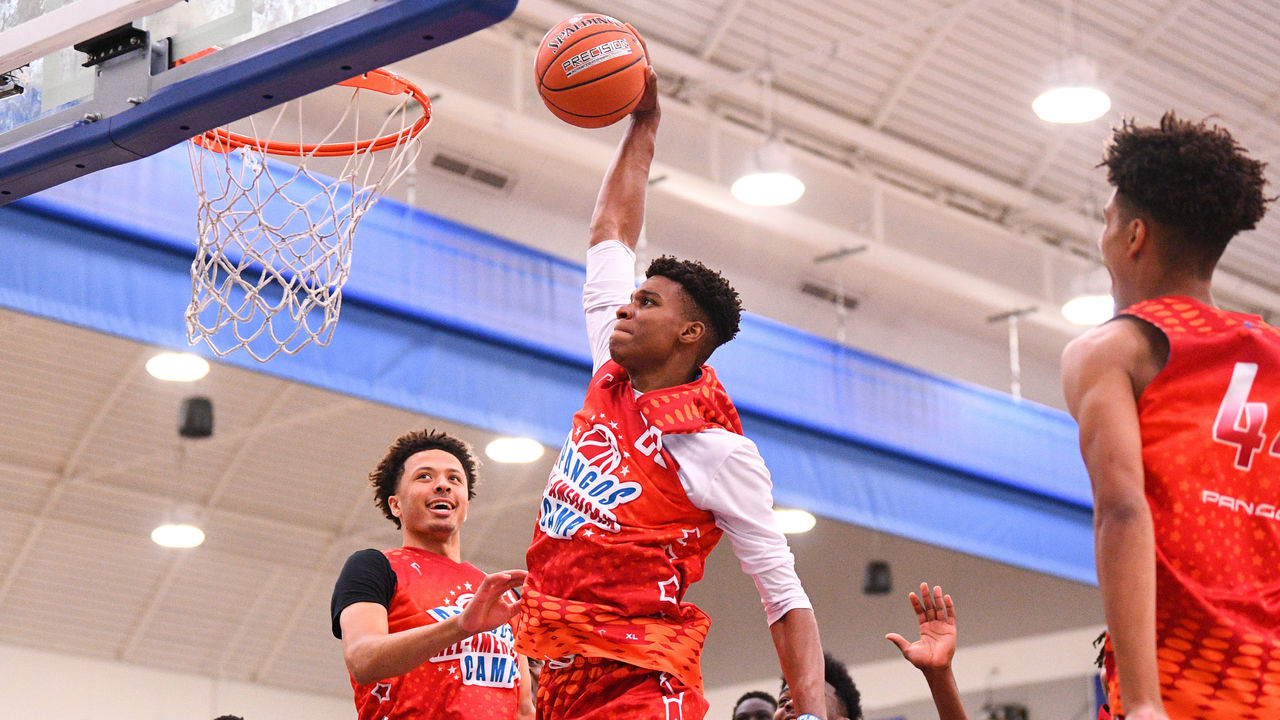Why would players like Jalen Green ever choose the NCAA now?
The NCAA's one-and-done era, however long it lasts, changed forever Thursday when Jalen Green - a top-two recruit in the 2020 class - announced he'll bypass college to join the G League's new development program.
Shortly thereafter, it was reported that five-star forward Isaiah Todd - himself a potential 2021 lottery pick - also plans to sign a G League deal after renouncing his commitment to Michigan earlier this week.
No one should be shedding tears for the NCAA. The body that oversees collegiate sports in the U.S. has had years to figure out how to ensure players see at least some of the financial windfall it rakes in. The G League program will only target elite talent, leaving plenty of players to go the NCAA route.
But the demise of the NCAA as the primary feeder for future NBA talent is close anyway. The NBA is expected to end its one-and-done rule and once again allow high schoolers to declare for the draft as soon as 2022. In the interim, get ready for the decisions made by Green and Todd to become the norm for players of their ilk.
In fact, Green and Todd aren't the first elite American prospects to forego college in search of professional basketball opportunities in the 15 years since the NBA barred players under the age of 19 from being drafted.
Brandon Jennings played in Italy before being drafted 10th overall in 2009. Latavious Williams, who carved out a successful career in Europe after being a second-round pick of the Miami Heat, joined the then-D-League's Tulsa 66ers straight out of high school. Darius Bazley decommitted from Syracuse to join the G League in 2018, but then decided to forgo both and train on his own before the Oklahoma City Thunder made him a first-round selection last June. LaMelo Ball and RJ Hampton - both projected top-10 picks in this year's NBA draft - took their talents directly from high school to Australia's National Basketball League.
Green and Todd, however, will join a revamped G League Development Program that's more lucrative than the original 2018 G League Select Contract program that was available to players like Ball and Hampton.

The new format offers prospects the ability to earn more than $500,000 while taking part in a yearlong program that far better prepares them for NBA life than any collegiate experience ever could.
"Jalen will learn from an NBA-caliber coaching and player development staff as he begins his professional basketball journey," G League president Shareef Abdur-Rahim said in a statement. "He represents the next generation of NBA players, and we couldn’t be more excited to have him develop his professional skills in our league."
While the development program will see prospects play in exhibition games against other G-League clubs, national teams, and international NBA academy sides as opposed to regular-season G League contests, the G League is still an NBA property that features NBA-style basketball. The NCAA features a style and set of rules that NBA-bound players will never play again.
In addition to furthering their basketball skills in a more NBA-tailored system, the G League development program also offers incentives tied to assimilating more seamlessly into NBA life. According to ESPN's Jonathan Givony and Adrian Wojnarowski, Green's contract is expected to include bonuses tied to games played, participation in community events, and attending life-skills programs.
Not to mention, avoiding the NCAA's barriers when it comes to financial benefits means players like Green and Todd can capitalize on sponsorships, shoe deals, and any other ways they can profit off their likenesses before becoming full-fledged NBA stars.
So to summarize, the best high school basketball talents can now make significant money to play the game while adjusting to the NBA system, can profit off their own image, and no longer have to leave the country to do it (if they're American). In fact, Green and Todd will reportedly headline a new G League team based in Los Angeles, so not only will they reap the rewards of professional, NBA-linked basketball in the U.S. while bypassing the NCAA, they'll be able to do it in the most glamorous market on the planet.
Heck, the NCAA can't even offer the unique advantages of higher education to these top talents anymore. According to Yahoo's Chris Haynes, the G League is also offering Green a full scholarship should he choose to pursue a post-secondary degree.
Add it all up, and the question becomes: Why would prospects considered surefire NBA talents ever choose the NCAA route again?
The national television exposure that comes from playing for a big college program? A taste of college life while getting to live as the big man on campus? Dominating fellow teenagers and young adults, most of whom will never play professional basketball? Those benefits make a lot more sense for fringe draft prospects who still have something to prove to NBA scouts. The G League's program isn't meant for them anyway. The supposed NCAA benefits mean little to players like Green, who could be the No. 1 overall pick a year from now.
Landing a top recruit would usually represent the apex for many NCAA programs, with that type of commitment being the result of years of hard work. In one fell swoop, the NBA altered the horizon for top players of the future. Green and Todd are likely just the tip of the iceberg.
Joseph Casciaro is theScore's senior basketball writer.